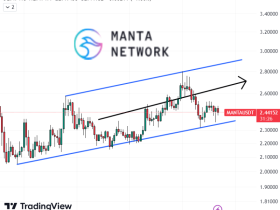The growing trend of tokenizing traditional assets has caught the attention of legacy financial institutions.
According to a recent report by Moody’s, a leading investment risk assessment firm, the value of tokenized funds has surged from $100 million at the beginning of 2023 to approximately $800 million today, driven by the rising tokenization of U.S. treasuries.
Moody’s Puts Tokenized Money Market Funds in the Spotlight
The report highlighted that both public and private blockchains are witnessing the inclusion of various assets.
Some of the more notable examples include Franklin Templeton’s U.S. Government Money Fund expanding from Stellar to Polygon, Backed Finance launching a tokenized short-term U.S. treasury bond exchange-traded fund (ETF), and UBS Asset Management deploying a tokenized money market fund (MMF) on the Ethereum blockchain.
According to Moody’s, the tokenization of MMFs offers the potential to combine their stability with the technological advantages of stablecoins.
Additionally, the applications of tokenized MMFs extend beyond simple purchasing and holding until maturity, indicating the potential for a wider range of uses.
The report also emphasized the significant efficiency benefits of tokenized assets, which could drive further adoption among traditional investors.
Moody’s suggested that tokenized funds can enhance market liquidity and accessibility, reduce costs, enable fractionalization, decrease dependence on intermediaries, shorten settlement times, automate processes through smart contracts, and enhance transparency.
RWA & Tokenization: Moody’s highlighted the growing adoption of blockchain-based tokenized funds, stating that it improves the efficiency of investing in assets like government bonds, funds and represents untapped market potential.
These are one of many reasons why RWA should be… pic.twitter.com/v9FueHXeFd
— The Real Lifestyle (@Trl_co) January 16, 2024
Crypto Investors Seek Stable On-Chain Yields
Moody’s report noted that the increased interest in tokenized treasury bills and bonds reflects the growing demand from crypto investors seeking stable on-chain yields.
While web3 lending markets offered higher returns compared to traditional short-term securities throughout 2021, the trend has reversed in the present higher-yield environment.
As a result, crypto investors have shifted their funds from stablecoins to traditional investments that offer comparable or higher yields with lower risks, such as U.S. T-bills.
Moody’s said the company is bullish on the tokenization of traditional assets, but also highlighted several unique risks associated with this emerging sector.
The report cautioned that tokenization service providers may face technological malfunctions and must navigate diverse and evolving regulatory landscapes.
Managing a tokenized fund requires expertise in areas such as token issuance and redemption, maintaining an on-chain investors’ register, and complying with know-your-customer (KYC) and anti-money laundering (AML) checks, which may pose challenges for fund managers and administrators.
The report also underscored the technological risks of asset tokenized on public blockchains, including cybersecurity attacks and governance issues.
Moody’s recommended the adoption of off-chain investor registers to mitigate these risks.
To safeguard against bankruptcy or unforeseen circumstances, Moody’s suggested that all relevant stakeholders involved in tokenized funds, including the technology provider, fund manager, fund administrator, and custodian, should be independent and replaceable.
The report further recommended programming tokens to allow fund administrators to restrict asset transfers between whitelisted wallets controlled by accredited investors who have completed KYC and AML checks, reducing the risk of cyberattacks and fraudulent activities.
The post Tokenized Funds Skyrocketed to $800M Value in 2023, Sparked By US Treasury Tokenization: Moody’s appeared first on Cryptonews.






